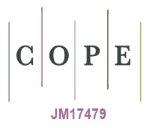Design and Studying the Effect of Inner Bore Diameter of Unipolar Lens
DOI:
https://doi.org/10.23851/mjs.v33i3.1140Keywords:
Spherical aberration coefficients, Magnetic lens, Chromatic aberration coefficients, Magnetic properties, Optical properties.Abstract
This work investigated the development of magnetic and optical properties and the invention of a previously unused lens. Many new designs have been suggested for a unipolar magnetic lens based on changing the width of the inner bore and fixing the other geometrical parameters of the lens to improve the performance of unipolar magnetic lenses. The investigation of a study of each design included the calculation of its axial magnetic field the magnetization of the lens in addition to the magnetic flux density using Finite Element Method (FEM). it was found that the best magnetizing properties, the highest value of magnetic flux and the lowest value of band width of the axial magnetic field strength have been obtained when the width of the inner cavity was (55 mm). The effect of current density on the optical properties has been also studied, and it was found that the optical properties have been improved also, and the chromatic and spherical aberration values have decreased significantly. Thus, the lens (55 mm) was chosen as the best design among the proposed designs.
Downloads
References
M. Knoll, E. Ruska, Electron microscope, Z.Phys. 78 (1932) 318-339
M. Ardenne, Scanning electron microscope, Z.Phys. 109 (1938) 553-572
R. Egerton, Physical Principle of Electron Microscopy an introduction to TEM, SEM, and AEM, thirded., Alberta, Canada, 2005.
A. Ahmed, The Effect of Coil Geometry and Magnetic Circuit on the Flux Lines Trajectory of the Magnetic Lenses, Raf.J.Sci. 16 (2005) 95-108.
A. Al-Abdullah, M. Al-Khashab, the magnetization of the single pole piece magnetic electron lens using different coil models, Raf.J.Sci. 17 (2006) 37-46.
M. Al-Khashab, N. Sadie Design of the objective magnetic and electrostatic lenses for low beam energies, Dirasat, Pure Sci. 37 (2010) 85-95.
A. Al-Batat, Z. Al-Rubaye, Simulation of magnetic electron lenses, J.K university. 10 (2012) 217-227.
A. Ahmed, The effect of compound magnetic-electrostatic lenses lnsulation on its optical properties, Raf.J.Sci. 25 (2014) 70-79.
R. Abdulla, Study the optical properties of iron- free magnetic lens, Raf.J.Sci..18 (2015) 79-82.
S. El-Shahat, A. Al Amir, G. Hassan, Studies on the effect of pole piece shape for saturated single pole magnetic lens, Proceedings of the 1st International Conference on New Horizons in Basic and Applied Science, Hurghada-Egypt. 1 (2013) 290-298.
T. Mohsen, Q. Ahmed, Design and Study of the Optical Properties of Electromagnetic Lenses Dual-polar analog using the program(EOD), JUB. 25 (2017) 1991-1997.
N. Numan, Theoretical Study of Geometrical Properties and Aberrations in Doublet Magnet Lenses, JUBES. 26 (2018) 178-187.
R. AL-Salah, A. Al-Abdulla, E. Alkattan, Simple program for computing objective optical properties of magnetic lenses, IJCAT. 66 (2022) 254-259.
P. Hawkes, Recent advances in electron optics and electron microscopy, JUM. 29 (2004) 837-855.
C. Weninger, P. Baum, Temporal distortion in magnetic lenses, JUM. 113 (2012) 145-151.
M. Al-Shamma, M. Al-Khashab, Improvement of the optical performance of the geometrical parameters of snorkel magnetic lens, Raf.J.Sci. 28 (2019) 85-97.
O. Hussein, F. Al-Moudarris, F. Gaafer, Investigation of the optical properties of the achromatic quadrupole lens by using the rectangular potential distribution model, Baghdad Sci.J. 6 (2009) 386-393.
H. Hasan, S. Obaid, M. Erhayief, Recent development-2 of CADTEL software the optimum conditions of scherzer imaging in the electron magnetic lenses, IraqiJ.Sci. 63 (2022) 131-148.
Lencová, B. and Zlámal, J. (2008), "A new program for the design of electron microscopes", ScienceDirect, Vol. pp. 315-324.
Downloads
Key Dates
Published
Issue
Section
License
Copyright (c) 2022 Al-Mustansiriyah Journal of Science

This work is licensed under a Creative Commons Attribution-NonCommercial 4.0 International License.
(Starting May 5, 2024) Authors retain copyright and grant the journal right of first publication with the work simultaneously licensed under a Creative Commons Attribution (CC-BY) 4.0 License that allows others to share the work with an acknowledgement of the work’s authorship and initial publication in this journal.






















